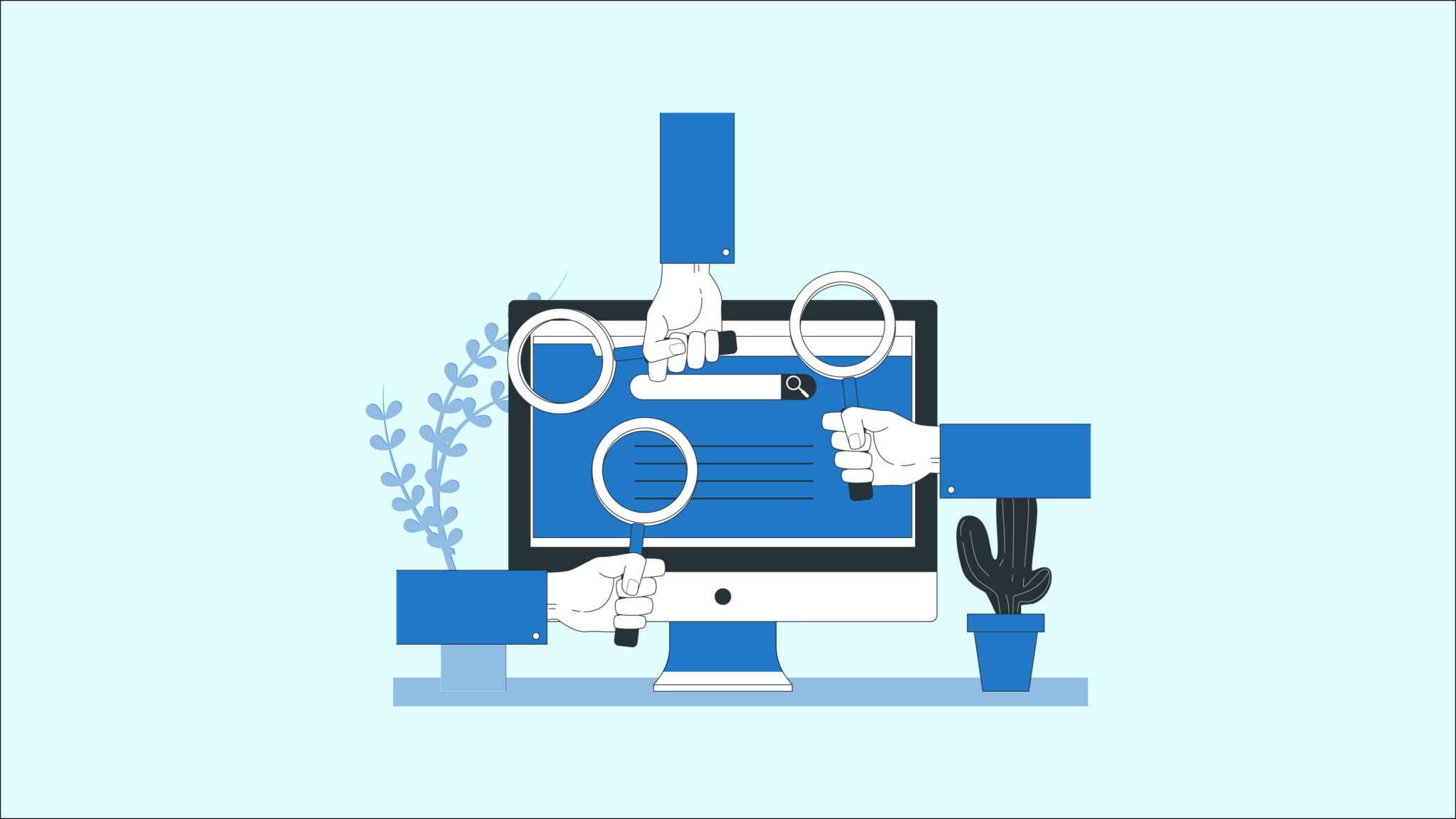If you are serious about increasing your website traffic, then you need to pay attention to the WordPress SEO best practices. Just because Search Engine Optimization (SEO) has changed drastically over the past decade, it doesn’t mean it’s dead. Actually, the more WordPress grows its market share, the more people look for ways to improve their WordPress SEO. If you are serious about increasing your website traffic, then you need to pay attention to the WordPress SEO best practices. Just because Search Engine Optimization (SEO) has changed drastically over the past decade, it doesn’t mean it’s dead. Actually, the more WordPress grows its market share, the more people look for ways to improve their WordPress SEO. Businesses now have to take new and unique approaches to win the never-ending race to the top of Search Engine Results Pages (SERPs).You might have heard experts saying that WordPress is SEO friendly. This is actually why a lot of people choose WordPress to start a blog or a website.
Businesses now have to take new and unique approaches to win the never-ending race to the top of Search Engine Results Pages (SERPs). Many bootstrap companies and blogs build their entire brands off of organic search and WordPress SEO. While this may be risky, it’s still a sign that SEO is alive and well.
In this in-depth post, we are going to share more than 50 WordPress SEO tips that help us grow our organic traffic regularly here at Kinsta. I’m sure these will help you skyrocket traffic on your WordPress site as well and dominate your competition.
There’s a lot to cover, so let’s dive right in!
Why should you speed up WordPress?
There are many reasons that ring alarm bells, some of which might even cause major concerns for you:
- Search engines (like Google) rank websites with fast-loading times higher than the slow-loading ones. So, if you want to improve your position in the SERPs, improving speed should be one of your priorities.
- Studies have shown that site-loading speed of more than 2 seconds usually results in about 47 percent of visitors bouncing off the website. So, to keep about half of your visitors interested, you should speed up your WordPress.
- Online buyers are the most impatient lot; they expect the page to load within a second. So, if you are running an e-commerce store on WordPress then you better get ready to make major improvements so your business can be more profitable.
WordPress SEO Tips for 2021:
Enough talking about what we achieved, let’s get to work! Check out the 58 WordPress SEO tips and frequently asked questions for 2021 below to help you achieve better results on SERPs and organic traffic.
1. Choose a better web hosting provider
providers like Cloudways (where I work) who make the task of sThe major factor that influences the speed of a website is the hosting of your WordPress website. It might seem like a good idea to host your new website on a shared hosting provider that offers “unlimited” bandwidth, space, emails, domains and more. However, the point that we usually miss out on regarding this offer is that shared hosting environments fail to deliver good loading times on peak traffic hours, and most fail to provide 99 percent uptime in any given month.
Shared hosting tends to deliver a poorer performance because you are sharing the same server space with countless other websites, and there is no telling how much resources others are using. Plus, you don’t know exactly how well the servers are optimized.
Thankfully, the web-hosting industry has advanced with technology, and the prices of cloud hosting providers have decreased with the passage of time. In the present times, you can buy dedicated cloud servers from SiteGround, DigitalOcean, Amazon Web Services, and even Google Compute Engine at a nominal price. However, setting those servers up can be a daunting task as you are required to set servers up from scratch. There are web hosting etting up optimized cloud servers as easy as click and launch.
2. Reduce image sizes
Images are the major contributors to the size increment of a given webpage. The trick is to reduce the size of the images without compromising on the quality.
If you manually optimize the images using Chrome PageSpeed Insights extension or Photoshop or any other tools, the process will take a long time. Fortunately, there are plugins available for just about everything you can think of, including image optimization. The ones worth mentioning are:
Using any of the above mentioned plugins on your WordPress site will drastically reduce image sizes, thus improving the speed of your website.
3. Choose Your Preferred Domain
This is a two-sided tip:
www vs non-www
If you are just launching your website, the very first question you might have is whether you should include www in your domain or not. Some people are under the impression that this will affect your WordPress site’s SEO.
Put simply, there is no SEO benefit to having www in your domain. It will not influence your rankings in any way. But that’s not to say you should always go with a non-www address. There are a couple of reasons you might still want to use it:
- Using www as part of your domain used to be the standard. This isn’t necessarily true anymore. Even we don’t use www here at Kinsta. One reason you still might see sites incorporating it is simply that changing it can be complicated and cause issues. Many older brands simply continue to use it.
- Large companies with a lot of traffic might want to use www due to Domain Name System (DNS) records. Naked (non-www) domains technically can’t have a CNAME record used to redirect traffic for failovers. However, there are workarounds to this issue.
When it comes down to it, using a www vs a non-www domain is more a matter of personal preference. Perhaps you prefer shorter URLs, in which case you could go with a naked domain.
Remember, no matter which version you choose, you should set up redirects so that only one version is accessible. For example, if you visit www.kinsta.com, it simply redirects to kinsta.com.
Previously, you could set your preferred domain to appear in search results via Google Search Console. However, the platform discontinued this option in 2019. Now it can determine which version you prefer based on the information it gathers from your site, such as Schema markup.
Submitting a sitemap is helpful as well. Make sure to keep reading to see how to do it properly.
Avoid Duplicate URLs
As mentioned above, you should only allow one version of your URLs to be accessed, with redirects in place to divert users and crawlers to the correct URL. This goes a step further when considering other factors, like the casing used in your URLs. For example, the following URLs will likely load the same content, meaning search engines could index them both as two separate pages.
techypark/about-us/
techypark/About-Us/
The same goes for URLs that end with and without a trailing slash. For example:
techypark.com/about-us/
techypark.com/about-us
And also based on the protocol. For example:
https://techypark.com/about-us/
http://techypark.com/about-us/
This is bad for SEO, because each duplicate version is effectively competing with the original. Redirecting any duplicate URLs to the originals will ensure all ranking signals go to a single version, giving it a better chance of showing up in the search results.
Redirect rules ensure anyone accessing the wrong version is directed to the correct version.
4. Minify JS and CSS files
If you run your website through Google PageSpeed Insights tool, you will probably be notified about minimizing the size of your CSS and JS files. What this means is that by reducing the number of CSS and JS calls and the size of those files, you can improve the site-loading speed.
Also, if you know your way around WordPress themes, you can study the guides provided by Google and do some manual fixing. If not, then there are plugins that will help you achieve this goal; the most popular being the Autoptimize that can help in optimizing CSS, JS and even HTML of your WordPress website.
5. Use advanced caching mechanisms with a caching plugin
WordPress caching plugins (e.g. W3 Total Cache) have been there for a long time, making the complex tasks of adding caching rules to your website elements easier. Combining such plug-ins with advanced caching mechanisms like Varnish could help you better the loading speed of your website and ultimately speed up WordPress considerably.
6. Use a CDN
The people who visit your website belong to various locations in the world, and needless to say, the site-loading speed will differ if the visitors are located far away from where your site is hosted. There are many CDN (Content Delivery Networks) that help in keeping the site-loading speed to a minimum for visitors from various countries. A CDN keeps a copy of your website in various datacenters located in different places. The primary function of a CDN is to serve the webpage to a visitor from the nearest possible location. Cloudflare and MaxCDN are among the most popular CDN services.
7. Enable GZIP compression
Compressing files on your local computer can save a lot of disk space. Similarly, for the web, we can use GZIP compression. This maneuver will dramatically reduce the bandwidth usage and the time it takes to gain access to your website. GZIP compresses various files so that whenever a visitor tries to access your website; their browser will first have to unzip the website. This process brings down the bandwidth usage to a considerable extent.
You can use either a plugin like the PageSpeed Ninja, which enables GZIP compression, or add the following codes in your .htaccess file.
AddOutputFilterByType DEFLATE text/plain
AddOutputFilterByType DEFLATE text/html
AddOutputFilterByType DEFLATE text/xml
AddOutputFilterByType DEFLATE text/css
AddOutputFilterByType DEFLATE application/xml
AddOutputFilterByType DEFLATE application/xhtml+xml
AddOutputFilterByType DEFLATE application/rss+xml
AddOutputFilterByType DEFLATE application/javascript
AddOutputFilterByType DEFLATE application/x-javascript
8. Always Use a Focus Keyword
When it comes to WordPress SEO, it is important to remember that Google is still a computer algorithm. For that reason, keywords still matter in 2021.
You definitely should be writing for your visitors and customers, but write smart.
You can write for your audience while still keeping SEO best practices in mind. Remember, alternative search engines such as Bing and Yahoo rely even more on what some may call ‘outdated’ SEO practices.
Whenever you write a blog post or publish a page on your WordPress site, you should always have a focus keyword in mind. Don’t just craft a post for the sake of pushing out more content. We’ll talk more about keyword research further below.
Using the Yoast SEO plugin, you can easily set the focus keyword that you want to write about. For example, for this post, we are using the focus keyword “WordPress SEO.” You can see that Yoast SEO analyzes the keyword density, and is reporting that it is a little low for this post:
Example of the focus keyword
While keyword/keyphrase density is by no means a ranking factor, it can still help you when it comes to making sure your content includes your target keywords.
9. Incorporate Title Tags
It’s important that you include your main focus keyword in your blog post or page title tag. In the past, SEO experts recommended to even place your keyword at the beginning of the title whenever possible, as this would carry more weight in search engines.
In 2021, this approach is slowly losing advocates and, although having important keywords in early positions in title tags is still important, things are now moving towards more complex scenarios where click-through rate (CTR) optimization should be taken into account on top of keyword relevancy.
Some have reported seeing 20 percent increases in their CTRs simply by making small tweaks to their titles.
For example, we’ve placed our keyword “WordPress SEO” at the very beginning of the title of this blog post, not only to get a little SEO boost, but mainly to make it clear to readers what the blog post is about, hence improving our click-through rate.
So, how do you add your focus keyword to your title tags?
Titles are limited by pixels now, but Yoast SEO uses character counts, which is a close approximation.
You can manually set a title tag in the Yoast SEO plugin, as seen below. Remember that Google has a viewable limit of 65 characters on desktop. If you go over that, searchers may not see your entire title on SERPs:
Title tag in Yoast SEO plugin
Split-testing your titles (also often called A/B testing) can be another effective way to increase your CTR and help Google see your content as more relevant. There are tools out there that allow you to A/B test title tags & meta descriptions in order to improve your CTR.
Another factor to consider is whether or not to use your company name at the end of your title tags. This won’t hurt your SEO, but having your company name might not always be the best decision in terms of increasing your CTR or demonstrating the relevance of your content.
It will also eat into your character limits, giving you fewer characters to play with and potentially cause your title tags to be cut short in the search results.
Title tag cut short in Google Search
10. Write Meta Descriptions to Increase Click-Through Rate
Meta descriptions do not affect your WordPress SEO when it comes to rankings. However, they do affect your CTR. A well-written meta description can entice users to click on your post instead of the one above or below it in SERPs.
Plus, the higher your CTR, the more relevant Google will deem your content, therefore ranking your page higher. So, in a sense, meta descriptions can indirectly affect your rankings. You can set your meta description manually in the Yoast SEO plugin by clicking on the Edit Snippet button below the editor:
Meta description in Yoast SEO plugin
11. Don’t Worry About Meta Keywords
Meta keywords are a thing of the past. We’re simply including them in our list for those who might be wondering if they should still be using them or not. The simple answer is no. Google and Bing used to rely on meta keywords in their ranking algorithms but that is no longer the case.
However, according to Yandex, <meta name=“Keywords” content=“…”/> may be used when determining a page’s relevance to search queries. If you want to add meta keywords to your WordPress site’s posts and pages, you can do so manually by inserting the above tag in your site’s header.
It’s unclear whether the Chinese search engine Baidu uses them.
12. Add Image Title Tags
The image title text isn’t used for WordPress SEO purposes and is not crawled by Google or Bing. Therefore, you don’t have to include it in order to achieve decent rankings for your content. You can see an example of a title attribute below:
<img src=”image.jpg” alt=”image description” title=”image title”/>
However, image title text does allow you to add tooltips to images. This can be a great way to simply incorporate a little Call To Action (CTA) when someone hovers over it on your site. While title tags aren’t technically going to help you rank better, they can help improve your user experience.
Just like with ALT text, you don’t need to know any code to add title text. You can simply add it via the Media Library by clicking on an image and filling in the Title field:
Adding image title attribute in the Media Library
Alternatively, you can also add title text within the WordPress Classic Editor. Follow the steps below to do so.
Step 1: Open the Image Settings
In the Classic Editor, click on the image for which you want to add title tags. This will open a small toolbar like so:
Accessing the image settings in the Classic Editor
Click on the pencil icon to open the image settings.
Step 2: Add the Image Title in the Relevant Field
In the resulting window, scroll down and open the Advanced Options dropdown. There, you’ll find the Image Title Attribute field:
Adding an image title via the Classic Editor
Click on the blue Update button when you’re done. Note that this setting isn’t available in the Block Editor, so you’ll have to add image titles in the Media Library if that’s your preferred content creation method.
13. Add Alt Text to Your Images
ALT text refers to the ALT attribute or alternative text that is applied to images on your site. ALT tags are used by screen readers for visually impaired users, providing extra context for images. They are also used by search engines to get a better understanding of image content and how they relate to the content around them.
For example, if someone was using the Dragon Naturally Speaking software, ALT text could actually help them navigate the page better. When viewing your site’s HTML, you can spot alt attributes within <img> tags, like so:
<img src=”image.jpg” alt=”image description” title=”image title”/>
You should always add ALT text to your images. If you haven’t done so yet, you can go back and do it now. With WordPress, you don’t need to know any code to add ALT text. You can simply type it in by selecting an image in your Media Library or by clicking on an image within the WordPress editor.
In the Block Editor, you’ll find the Alt Text (Alternative Text) field in the Block tab of the sidebar under Image Settings:
Adding ALT text in the Block Editor
To add ALT text in the Classic Editor, follow the steps below.
Step 1: Open the Image Settings
First, open your post or page in the Classic Editor. Then, click on the image for which you want to add ALT text. You’ll see a toolbar appear above it:
Opening the image settings in the Classic Editor
Click on the pencil icon to open the image settings.
Step 2: Add ALT Text in the Relevant Field
If you’re running the latest version of WordPress, the Alternative Text field should be the first one in the resulting window:
Adding ALT text in the Classic Editor
Click on the blue Update button when you’re done.
Usually, it is beneficial to add your focus keyword if it is applicable to the image. However, don’t just add your focus keyword as an ALT text across all of your images. As with all things SEO, do things in moderation. Google doesn’t like spamming.



